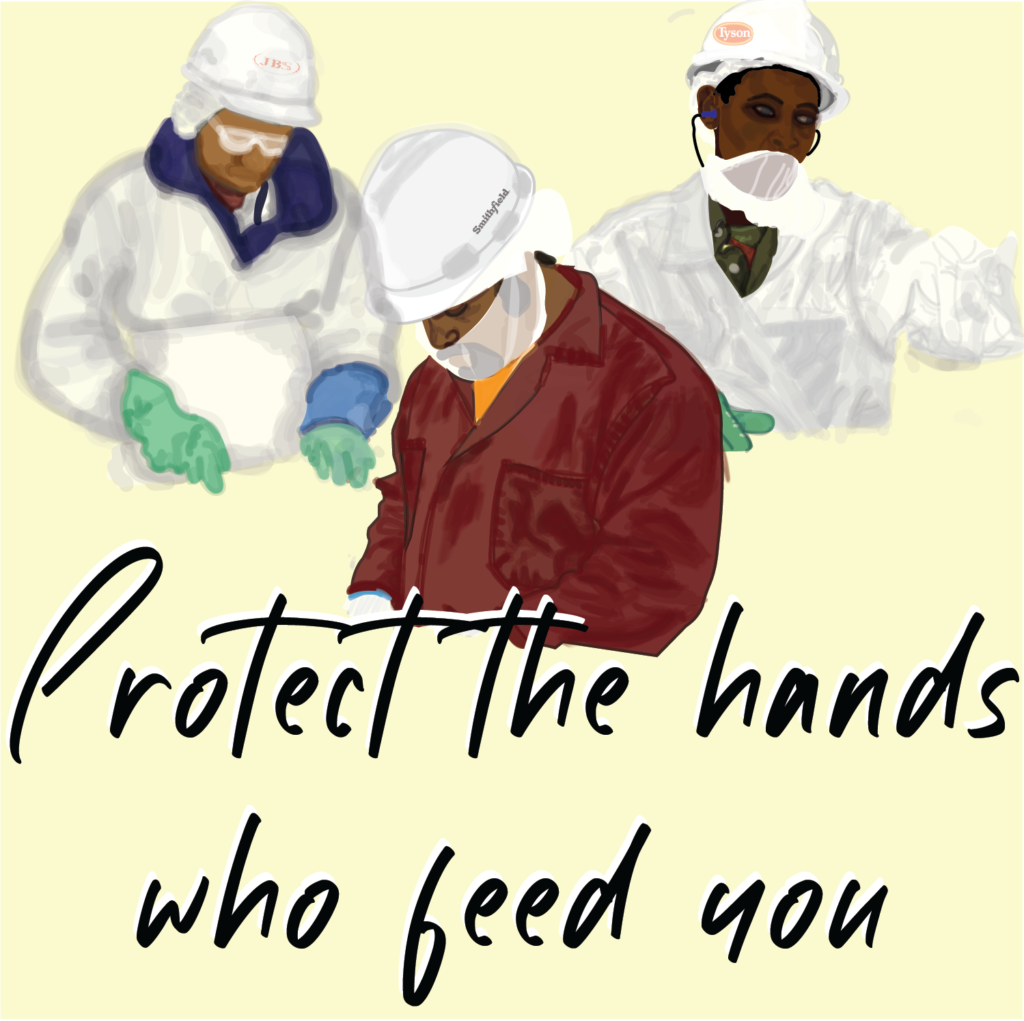This summer, the United States Department of Agriculture (USDA) announced that it anticipates investing $500 million to improve infrastructure in the meat and poultry industries. In response, Nebraska Appleseed submitted public comments urging the USDA to use these funds to reduce meat processing line speeds and implement ergonomic reforms. Currently, meatpacking facilities operate line speeds known to cause serious injuries, amputations, and the development of musculoskeletal disorders (“MSDs”). In the wake of the COVID-19 pandemic, understaffing and infection have only exacerbated these problems. Moreover, these industry hardships have been disproportionately borne by immigrant, Black, Latinx, and Asian communities. For instance, in a nation where immigrants make up 17% of the workforce, they currently account for 51.5% of meat and poultry workers.(1) Black, Latinx, and Asian workers, similarly, account for more than one-half of the industries’ total workforce.(2) These meat and poultry reforms are necessary, therefore, to improve both worker safety and address systemic inequalities.
The meatpacking industry, a war zone to many
The meat and poultry industry has a decades-long, well-documented track record of alarmingly high injury rates and a dangerously fast work pace. This dangerous work pace is created by a combination of understaffed facilities, unrelenting line speeds, and repetitive processing motions. These conditions make meatpacking one of the most dangerous industries in the United States. Between 2015 and 2018 reports show that a worker suffered an amputation or hospitalization every other day.(3) Workers describe being mistreated and working in conditions similar to “a war zone because there are so many injuries and wounded people.”(4) Furthermore, constantly making the same cutting and slicing motions cause many workers to develop MSDs during their life. MSD conditions like carpal tunnel or tendonitis may sound benign, but, in reality, they are life altering conditions that permanently affect a worker’s ability to do simple tasks. One worker described how his MSD conditions caused “an immediate loss of circulation to [his] hands” such that he “couldn’t hold a coffee cup, couldn’t hold a pen … couldn’t hold onto anything.”(5)
These inhumane working conditions have only been exacerbated by COVID-19 because meat and poultry workers have been disproportionately affected by the pandemic. During the peak of the first COVID-19 wave, in July of 2020, meatpackers accounted for 236,000 to 310,000 COVID-19 cases or 6 to 8% of total cases. Similarly, they accounted for 4,300 to 5,200 deaths, approximately 3 to 4% of total deaths.(6) Perhaps unsurprisingly, these statistics were accompanied by reports that meatpacking facilities failed to provide masks(7) or create a workspace environment compatible with social distancing requirements.(8) Now, as hiring fails to keep pace with additional pandemic staff reductions, workers frequently report that processing plant line speeds continue unchanged or even increase.
Historically, the USDA has denied the extent their regulations harm meat and poultry workers. However, by dictating the maximum inspection speed rates, the USDA directly influences a meatpacking facility’s maximum work speed. As the USDA considers how new federal funds can improve meatpacking infrastructure, our comment urges the USDA to develop regulations to reduce inspection speed and facilitate healthier workspeeds. Additionally, we renew previous suggestions designed to enhance workplace ergonomics and prevent the development of MSDs. These suggestions include improved access to proper tools and maintenance, mandatory rest breaks, job rotation, and reduced motion requirements for injured workers.
Food safety cannot be divorced from worker safety
The suggestions provided in our comment are necessary to create a safer, healthier meat packing industry and address challenges created by COVID-19. Throughout the pandemic, government officials have touted meat and poultry workers as essential to our local and national economies. In doing so they adopted policies that endangered workers and placed them in harm’s way. By creating safer work facilities and addressing disparities, these federal dollars now present an opportunity to show workers they are, most importantly, essential community and family members.
[button style=”danger” href=”https://www.regulations.gov/comment/AMS-TM-21-0058-0432″]Read Our Full Comment[/button]
- Brown et al,. Meatpacking Workers are a Diverse Group Who Need Better Protections, Center for Economic Policy and Research (2020), https://cepr.net/meatpacking-workers-are-a-diverse-group-who-need-better-protections/.
- Id.
- Grant Gerlock, We Don’t Know How Many Workers Are Injured At Slaughterhouses. Here’s Why, NPR (May 25th, 2016), https://www.npr.org/sections/thesalt/2016/05/25/479509221/we-dont-know-how-many-workers-are-injured-at-slaughterhouses-heres-why.
- Omaid Zabih, Comment Letter on FSIS Proposed Swine Rule (May 7th, 2018), available at https://www.regulations.gov/comment/FSIS-2016-0017-83072.
- Southern Poverty Law Center, Unsafe at These Speeds (2013), available at https://www.splcenter.org/sites/default/files/Unsafe_at_These_Speeds_web.pdf.
- Charles Taylor et al., Livestock Plants and COVID-19 Transmission, 117 Proceedings of the National Academy of Sciences of the United States of America, no. 50, 2020, at 31706.
- Nichole Greenfield, COVID-19 Has Exposed the Gross Exploitation of Meatpacking Workers, National Resources Defense Council (Oct. 30, 2020), https://www.nrdc.org/stories/covid-19-has-exposed-gross-exploitation-meatpacking-workers.
- Nicole Narea, Why Meatpacking Plants Have Become Coronavirus Hot Spots, Cox (May 19, 2020), https://www.vox.com/2020/5/19/21259000/meat-shortage-meatpacking-plants-coronavirus.

